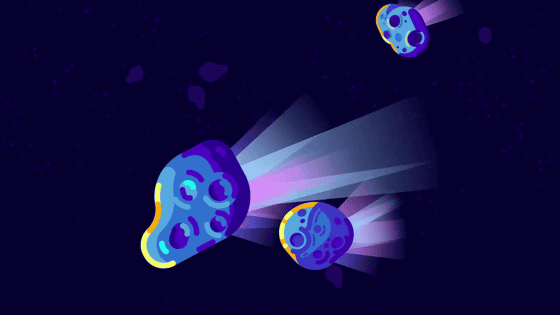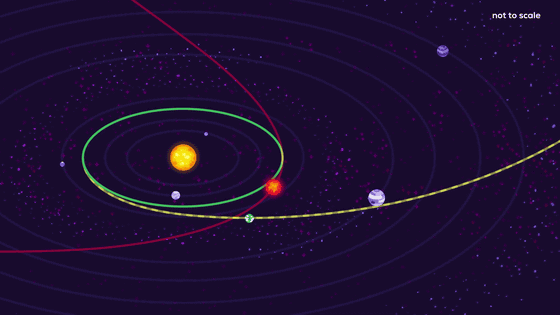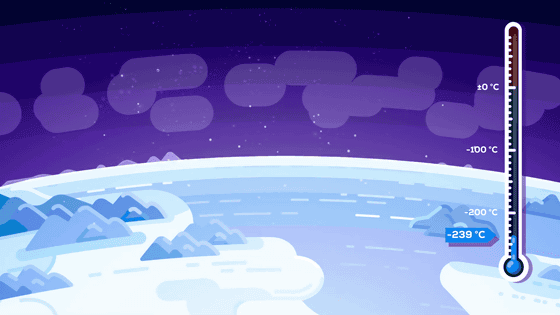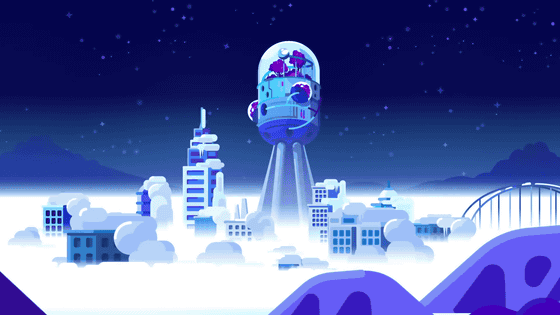What happens when the Earth is ejected from the solar system?

All living things on earth benefit from the light and heat of the 'sun' floating in the sky.
What If Earth got Kicked Out of the Solar System? Rogue Earth --YouTube
At first glance, the night sky is quiet and there seems to be no movement. However, in reality, the stars in the night sky are running through the galaxy at speeds of hundreds of thousands of kilometers per hour.

'Attraction' is important to understand how dangerous these stars are to the Earth. The gravitational force works even between atoms 10 million light-years away, but because it is affected by the 'distance to the other party' and the 'mass of the other party', it is mostly affected by the gravitational force received from a small object far away. I will not receive it.

On the other hand, a huge entity like the Sun, which accounts for 99.75% of the total mass of the solar system, affects all surrounding objects.

For billions of years after the Sun was born, the solar system was a dangerous space swirling with countless asteroids. However, as a result of asteroids colliding with planets such as the Earth, silence has come to the solar system.

Most planets and asteroids now do not leave predictable orbits. The predictable orbits of the solar system are divided into four regions: the inner solar system, the outer solar system, the asteroid belt (asteroid belt) , and the Kuiper belt .

Furthermore, it is thought that there is a spherical shell-shaped object group called the

If a giant star approaches the solar system, there will be a strong gravitational pull between it and all the celestial bodies in the solar system.

In fact, about 70,000 years ago, a

It is possible that Scholz's Star has caused asteroids to fly toward Earth. However, one theory is that even if there is an asteroid flying to Earth by Scholz, it will arrive 7 million years later, and its effect is not immediately clear.

In addition, the approaching giant star, such as Scholz's Star, is ongoing.

Gliese 710 is expected to reach the Oort cloud within a million years and become the brightest star on Earth.

It is predicted that Gliese 710 will pass through the Oort cloud for hundreds of thousands of years, greatly disturbing the orbits of millions of celestial bodies, and in the worst case, meteorites will fall on the earth. I will.

Depending on the meteorites that fall, it is possible that a large number of creatures on Earth will become extinct.

However, even the mass extinction caused by meteorites may be lukewarm. Gliese 710 is said to have the potential to reach the inner solar system, which is closer to the Sun than the orbit of Mars.

There is a possibility that Gliese 710 will collide with the sun, but it is also possible that Gliese 710 will distort the orbit of the earth. For example, the probability that 'Gliese 710 that passed nearby will cause the earth to jump out of the solar system' is 1 in 100,000, and it is estimated that it will occur within 5 billion years, so it can never happen. I can't say that.

So, let's think about 'what kind of change will occur on the earth if Gliese 710 passes by and the earth jumps out of the solar system?' First, when Gliese 710 flies, a phenomenon occurs in which the huge orange dots floating in the night sky gradually increase.

This orange light spot gradually increases and after a few months it reaches visible brightness even in the daytime.

Over time, it will become brighter than the moon, exceeding the brightness directly visible to the naked eye, and the night sky will be filled with eerie red light.

This phenomenon converges in a few months, and the orange light spot gradually becomes smaller and disappears ...

A few years later, this time the sun gradually moves away.

As the sun moves away, the earth becomes darker and colder, and the 'eternal winter' begins.

Glaciers in Antarctica and the Arctic grow huge, plants shrivel and die, forests freeze, and many animals die.

By the time the Earth crosses the orbit of Mars, the temperature on the ground will reach -50 ° C. The appearance of the earth also turns white as if it were frozen.

May the global infrastructure collapse and humanity gather and live in buildings. However, no matter what you burn to keep warm, it is unlikely that the temperature will rise forever. Plants and animals have died, and eventually food shortages will occur.

By the time it reaches the revolution orbit of Jupiter, the temperature of the earth recorded minus 150 degrees Celsius. The temperature of minus 150 degrees Celsius has never been recorded on earth since recorded history.

Needless to say, no human being can survive in this temperature.

As the sun no longer evaporates water, the

On the other hand, bacteria survive

Even when the Earth reaches the Kuiper belt, the Sun still holds the position of the brightest star seen from the Earth, but its brightness is not much different from other stars. By that time, you will be able to see the stars twinkling even in the daytime. The temperature around this time reached minus 230 degrees Celsius, where all gases freeze.

Human beings who observe it have been dead for a long time, but a strange phenomenon occurs on the surface of the earth where the atmosphere is filled with nitrogen and then oxygen snow falls. After several years of this phenomenon, the surface of the earth is covered with 10 meters of ice and the atmosphere is almost gone.

The Earth, which has been ejected from the solar system, becomes a

This scenario may sound hopeless, but there is hope. The approach of Gliese 710 can be observed thousands of years before it reaches Earth.

Even if the Gliese 710 cannot be stopped, it is possible that it will survive in a huge structure that uses geothermal power and nuclear power.

One option is to move to another planet before the Earth leaves the solar system. Thousands of years after immigration, the Earth age will be handed down as a legend of the past among the descendants of humankind.

Related Posts:







